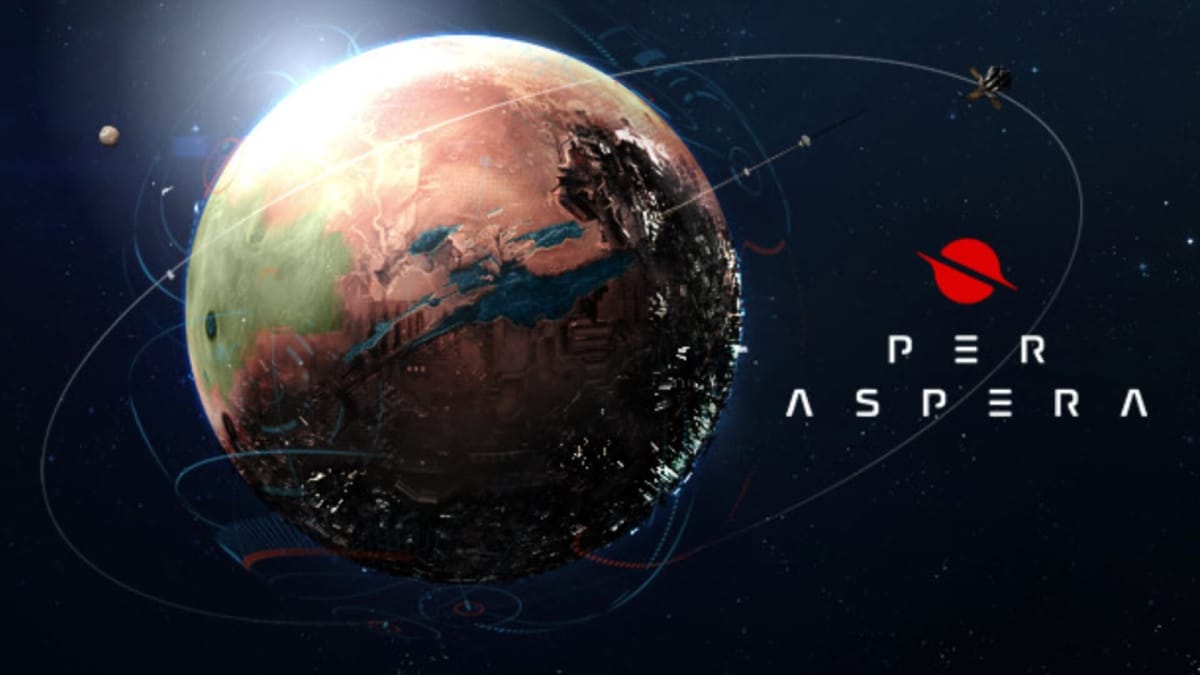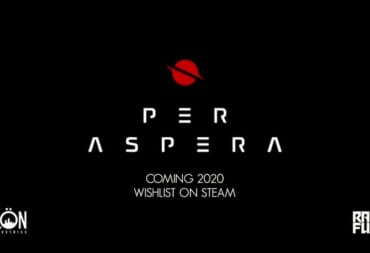Is there life on Mars? David Bowie never got to answer that question he famously asked in song, but now you can be the one to definitely respond "Yes."
Humanity still may be several years away from establishing the first colony on Mars, but with Tlon Industries and Raw Fury's Per Aspera, you can put yourself into the metaphorical shoes of the the mind that makes it happen.
You are AMI, the most advanced artificial intelligence ever created. You were built with a single mission: to terraform Mars and render it suitable for human life. The entire vast red planet is yours to monitor. You must mine resources, build facilities, and complete projects ranging from melting the polar ice caps to handling the issue of atmospheric dust. The human colonists will help you, but sometimes, the planet itself seems to be against you. You'll have to contend with brutal Martian dust storms, frequent impacts from comets and other space debris, and the mysterious abandoned facilities left over from other, less successful missions. Can a single artificial intelligence populate a planet and keep her colonists safe from constant threats - and will she ultimately follow the path of creation or destruction?
There is life on Mars, but keeping it that way won't be easy.
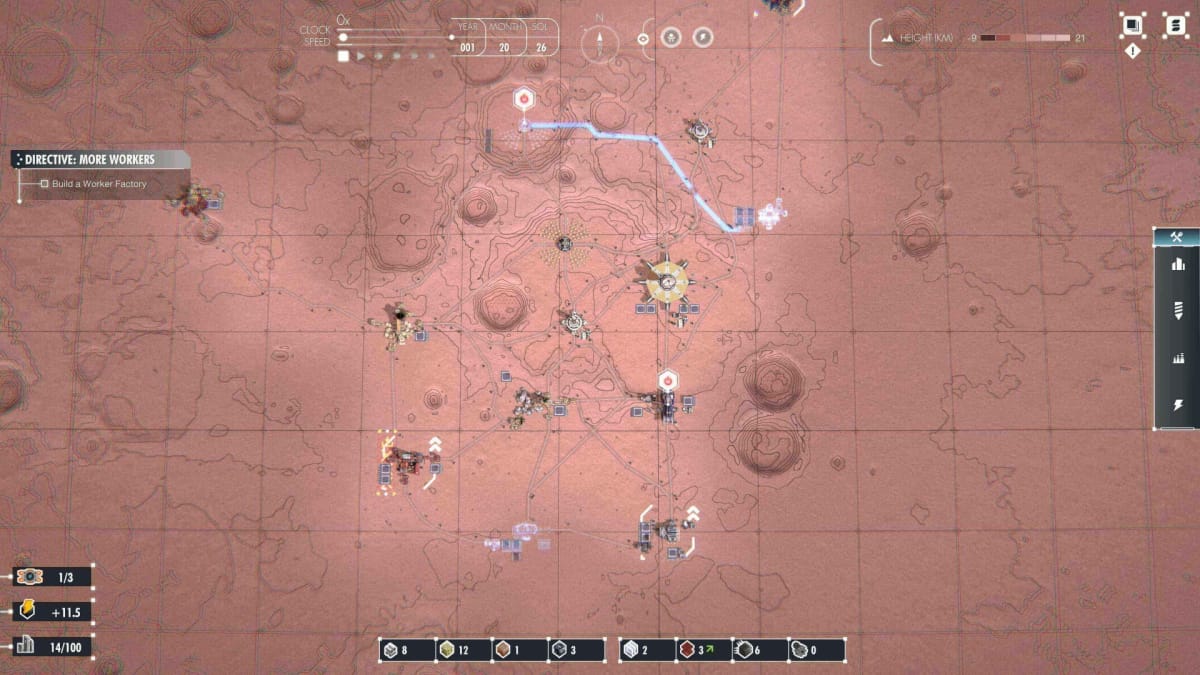
Science Fiction, Science Fact
On the spectrum of stories set in space, Per Aspera is less Star Wars and more Andy Weir's The Martian. While you don't have to harvest your own waste to fertilize potatoes like Matt Damon did, this game is brutally realistic regarding the amount of planning, research and hard work which would go into terraforming Mars. Its title comes from the Latin phrase "Per aspera ad astra," which translates to "with hardship, we reach the stars." It's no accident that Per Aspera chose to use only the first part of the phrase as its title. This is a game about struggle and hardship, and it's extremely up front about that fact.
The gameplay of Per Aspera is fairly standard for the "resource management" and "city building simulator" genres. As AMI, you create mines to harvest the resources available on the planet such as carbon, chemicals, iron, and even precious, scarce water. With these resources, you first build facilities to create useful items like electronics, robotic "workers," and maintenance drones. Finally, once your infrastructure is in place, colonists will begin to migrate from Earth. The colonists and their research skills allow AMI to attempt more ambitious projects, including establishing wind farms and launching additional satellites. The ultimate goal is to create a Mars which is capable of supporting human life without the need for endless maintenance and construction.
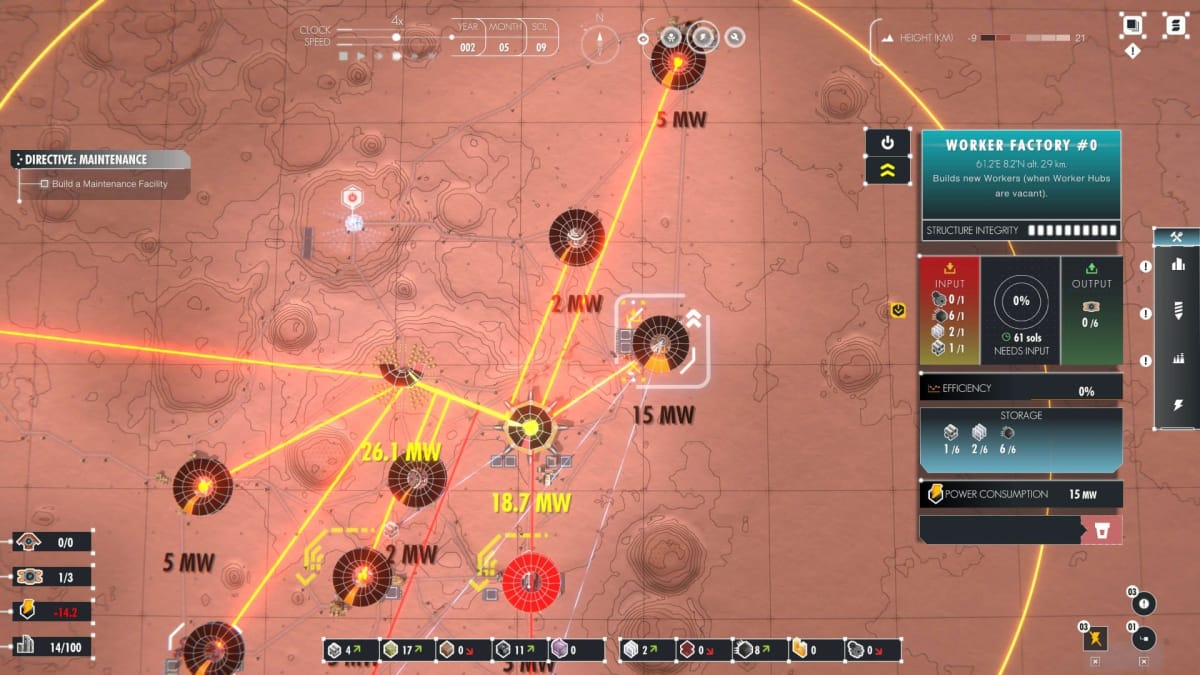
Where Per Aspera stands out is in its unflinching commitment to including real life science in every aspect of the game. The map of Mars which AMI has access to is inspired by real-life scans of the planet's surface provided by satellites and spacecraft, complete with named locations and the launch sites of real world Mars rovers. The presence of resources on or beneath the planet's surface is also inspired by actual research, while the projects AMI and the colonists complete are drawn from theoretical studies projecting how Mars could be terraformed and made sustainable for human life. Even what seem like the most out there ideas which AMI and her contacts discuss, such as "use nuclear weapons to melt the polar ice caps" or "crash the moon Deimos into the planet's surface in order to harvest potential energy," are actually based in scientific truths.
Playing this game is an extremely educational experience, as everything AMI learns is stored in her "Knowledge Base" menu, which can be accessed at any time. Additionally, reports compiled by the colonists during their research are frequently displayed for AMI (and the player) to read. Several times during my play-through, I found myself stopping the flow of in-game time entirely and spending up to an hour simply reading through Knowledge Base entries. If Tlon and Raw Fury's goal was to create an educational game and increase players' knowledge of Mars and Mars-related science, then they have most definitely succeeded.
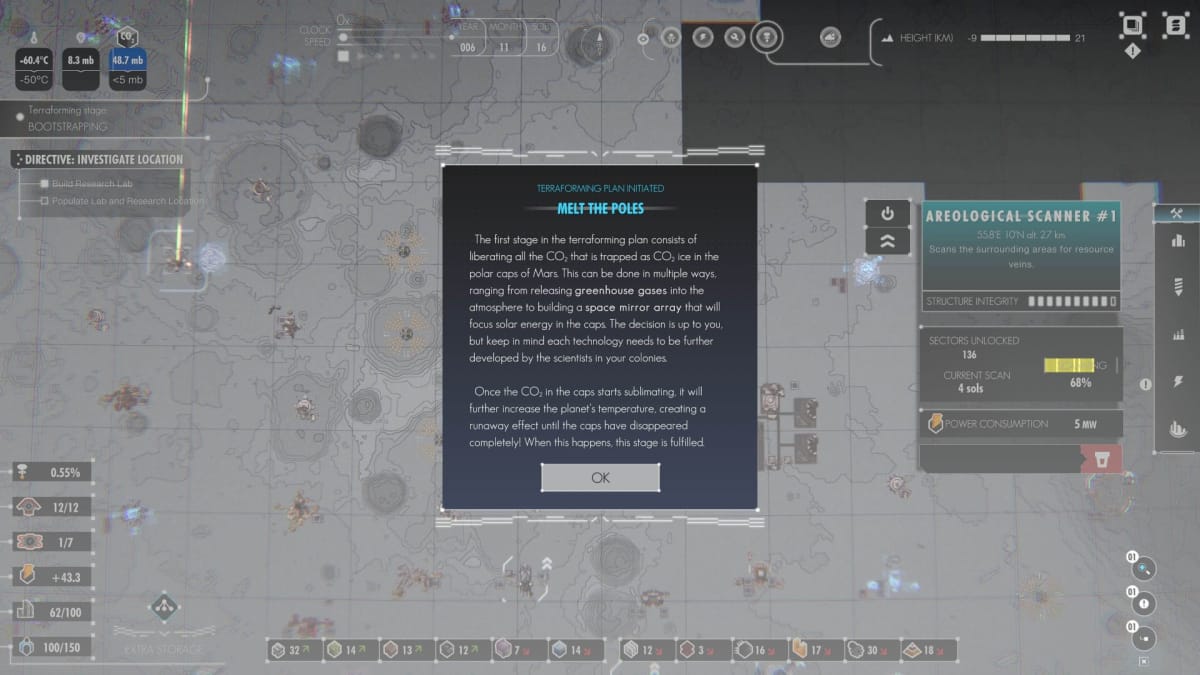
How Real is Too Real?
The science-based realism of Per Aspera is wonderful in so many ways, but it is not without its drawbacks. I came away feeling that Per Aspera is not a game for newbies to the resource management genre. This is a difficult game, even on Easy mode, and that difficulty is present from the very first moment of play. You are made aware of just how few resources you have available to you, and it is entirely possible to lose a story mode campaign within the first few minutes if you don't properly allocate your limited stored items before your mines get up and running. I had to scrap and rebuild facilities on three separation occasions within my first two hours of play.
Even once things are progressing more smoothly and you are beginning to pursue larger projects, the game is never a simple one. Per Aspera's press kit put the story mode at around 30 hours of play "depending on skill" and this is not an exaggeration.
One pitfall which resource management games must avoid is becoming tedious due to the slow pace of game play while you "ramp up" and diversify the types of tasks and facilities available to you. Unfortunately, Per Aspera does not completely avoid this trap. While you can increase the flow of time up to 16x, the beginning of the game is still extremely slow, especially the period prior to the human colonists' arrival. You are stuck with a single robotic worker for quite a while, which makes speeding things up difficult to do.
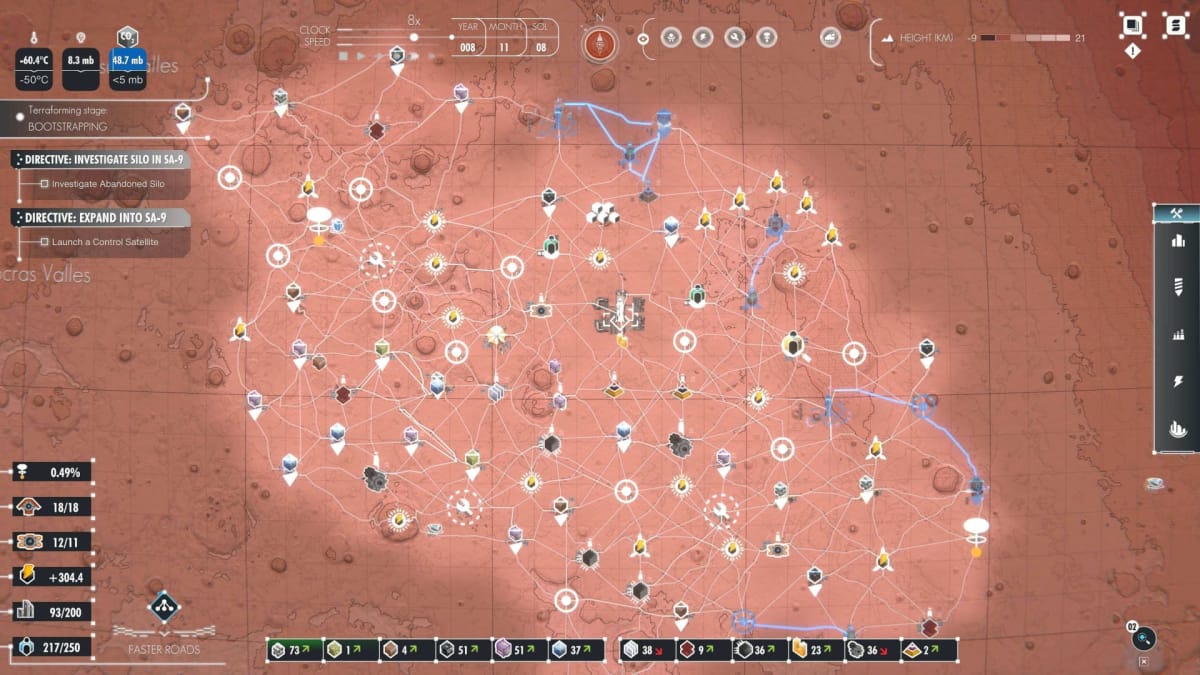
The pacing issues, unfortunately, persist throughout the entirety of AMI's terraforming mission. It can be extremely frustrating to be on the verge of starting a new major terraforming project but have to pause to construct more spaceports, wait for more colonists to arrive, or - worst of all - wait for the permission of AMI's human "handler," Dr. Nathan Foster, who calls only infrequently. There were a number of times when I chose to spend my colonist-generated Research Points on improvements which would speed up the game, such as more efficient roads, rather than those which would progress me towards my next goal.
It is in moments like these when I felt that Per Aspera went a little too far in its pursuit of realism. While it's nice to acknowledge that it takes colonists several months to reach Mars, or that large patches of the planet's surface will be totally devoid of resources, it can ultimately detract from the gameplay experience. There were even a few moments when I found myself multitasking or having to stop playing entirely simply because the game became too tedious even when played at max speed.
To give credit to Per Aspera, though, it does offer a Sandbox Mode - a fully creative mode in which players can design their own ideal Martian landscape with all of the game's resources available to them. When I got stressed by the story campaign's difficulty or tedium, it was nice to hop over to Sandbox and just play for a little while.
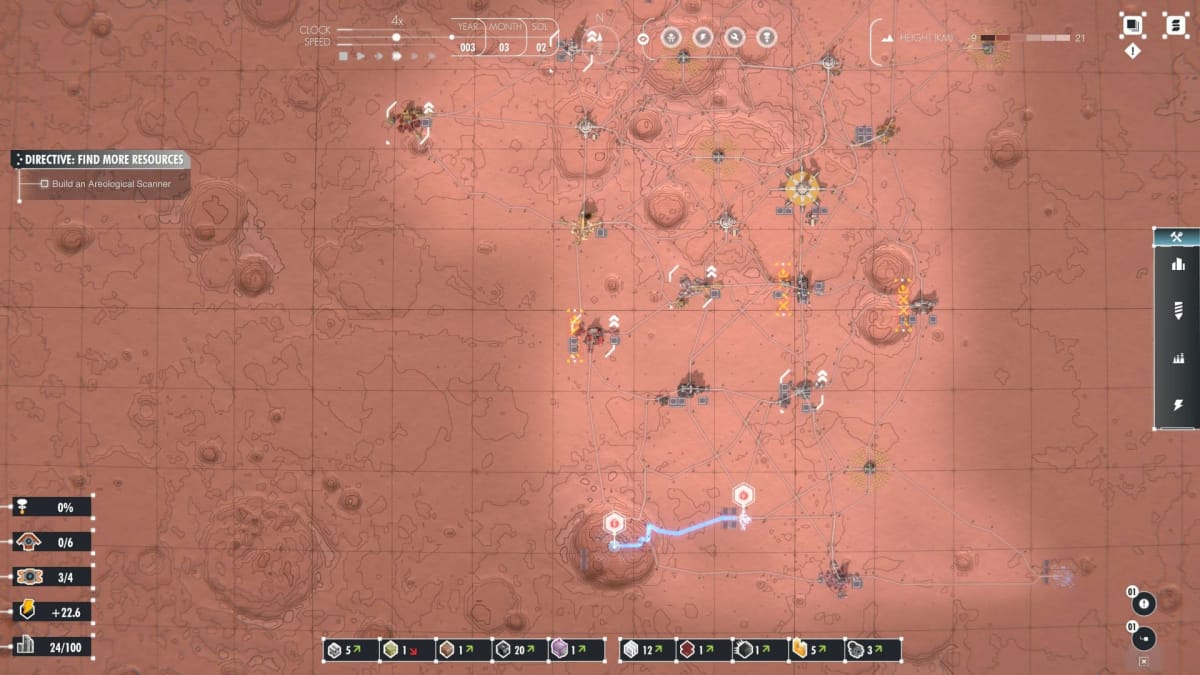
I, Robot - Per Aspera, Ad AMI
Per Aspera's greatest strength; however, lies in an element sometimes neglected by city building and resource management games: its storytelling. This is primarily a result of the central character. AMI is a triumph - she's an AI who knows exactly why she exists and what purpose she must serve, but still possesses the sense of self to ask herself questions and strive to find her own answers. Due to the game's pace, AMI spends a lot of time with only herself to talk to, and she uses that time to reflect on whether she is a tool or a genuine force of creation, whether the robotic workers are her children or simply tools, and even how humanity will eventually perceive and remember her in the future once her mission is completed.
These reflections are extremely poignant. AMI's voice actor displays a surprising amount of emotion for an AI protagonist, and the player is drawn into her struggles by choosing her responses to a number of key questions. I felt a connection to AMI far beyond what I expected to feel. One of the game's most surprisingly poignant moments is AMI's final Reflection before the human colonists arrive, in which she wonders whether the humans will treat her as a person or simply a tool or machine. The genuine relief AMI expresses when Dr. Elya Valentine, the leader of the first mission, greets her warmly and refers to her as a friend is a truly heartwarming and emotional storytelling moment.
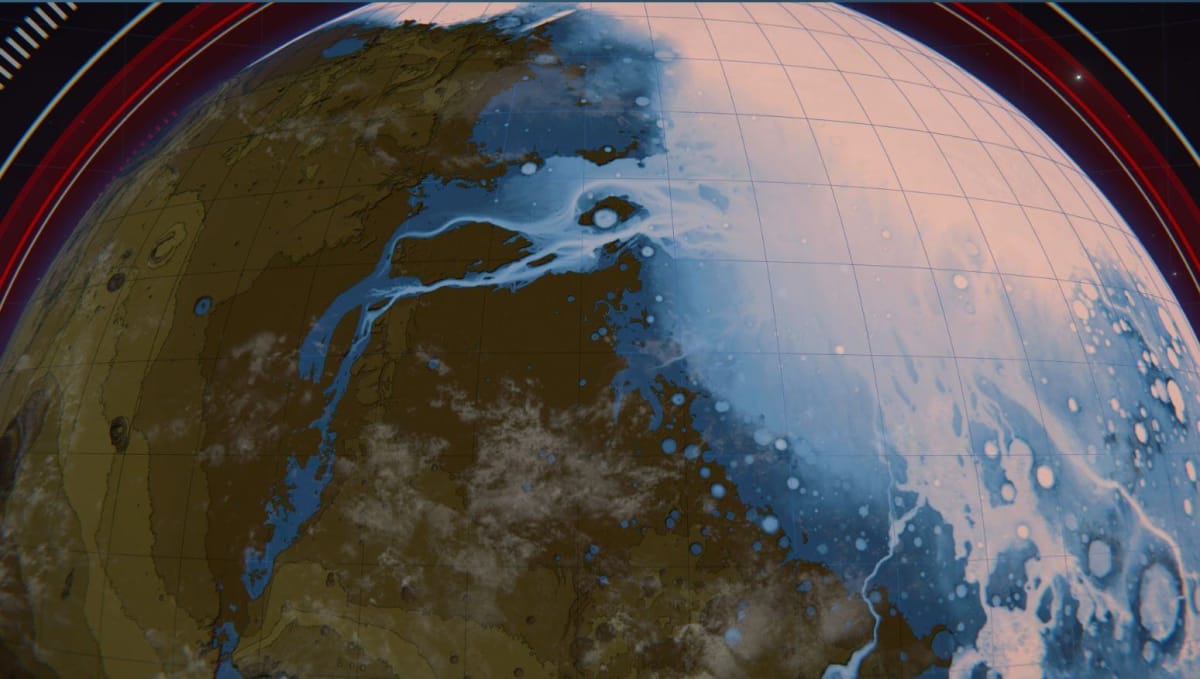
I also applaud the story's decision to embrace the topic of previous failed Mars missions. Throughout the story, AMI and the colonists discover and explore abandoned facilities and are forced to confront a harsh truth: they are not the first to attempt to colonize and terraform the Red Planet, and none of their predecessors survived. The emotions AMI displays when she encounters each facility and learns its history range from awe at what humans are capable of to sorrow regarding Mars' destructive power. I appreciated that these scenes do not shy away from acknowledging that humanity would likely do bad things in the race to terraform Mars. Another emotional moment comes when AMI finds her first abandoned facility - an unexpected discovery, as the mission it belonged to was kept secret. She reacts first in relief when she considers that she might not be alone and then abject horror when she realizes the purpose of the facility: the storage of nuclear weapons.
Does the strength of Per Aspera's storytelling fully balance out its pacing issues and possibly too-steep difficulty curve? I would say not entirely, but it is a genuinely beautiful experience which is absolutely worth taking the time to complete.
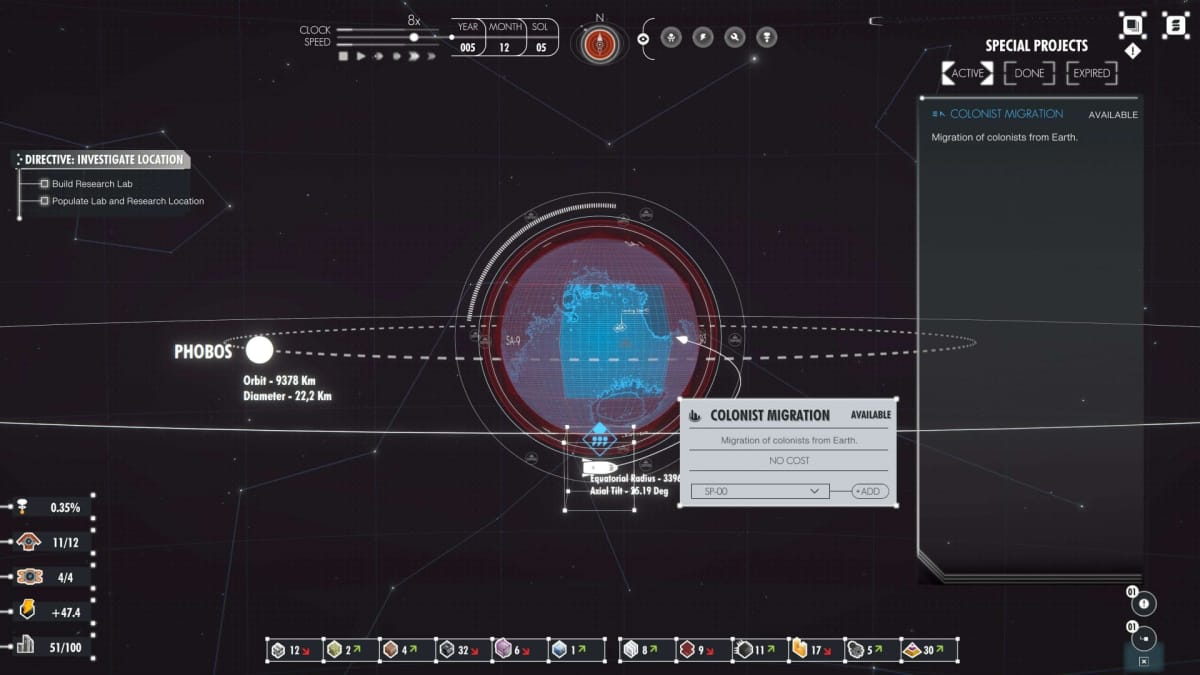
Not Always Easy On the Eyes
Before closing out this review, I do have to mention one minor issue which consistently bothered me. Despite the stark, un-crowded Martian landscape which is extremely easy to look at for long periods of time, the map of the facilities AMI builds quickly becomes overwhelmingly busy. The game displays a ton of information about each facility, from what resources it requires to what it puts out to how much power it requires to remain operative. While all of this information is necessary, it's....a lot. There were a few times I simply had to step away from the game for a little bit because it was so much, especially later in the game.
While Per Aspera's developers attempt to address the issue by providing multiple views, such as one focused on power and another focused on resources, it does not fully solve the problem. There is really no way to view your settlements that isn't extremely visually busy. I found myself frequently using the "Scan for Resources" view simply because it was somewhat less overwhelming than the others.
It does not help that the facilities look fairly similar, especially early in the game when all you are building are mines and factories. Mars is huge, and the facility icons and layouts are fairly similar, so it is easy to get confused and forget where a certain factory or worker hub is located. I think these issues could be solved in future updates by making the facilities more visually distinct and implementing more "information-lite" ways of viewing your settlements.
Although it is not without its flaws, Per Aspera is ultimately a very satisfactory addition to the resource management genre. It stands apart from other similar games due to its surprisingly deep narrative and commitment to real-world science. At some moments, the realism becomes too much, leading to a steep difficulty curve and a visually busy user interface. However, it is an extremely fun and educational game which fans of science fiction, space travel, and stories about the nature of AI should try out.
TechRaptor reviewed Per Aspera on PC with a code provided by the developer.
Review Summary
Pros
- Commitment to Real-World Science Makes for an Educational Playing Experience
- Engaging Narrative Built Around a Well-Developed Central Character
- Sandbox Mode Sllows You to Play Around and Create Your Ideal Martian Environment
Cons
- Visually Busy Interface Can Lead to Information Overload
- Steep Difficulty Curve Especially in Early Game
- Slow-Paced Beginning Which Ramps Up Only Gradually
Have a tip, or want to point out something we missed? Leave a Comment or e-mail us at tips@techraptor.net
